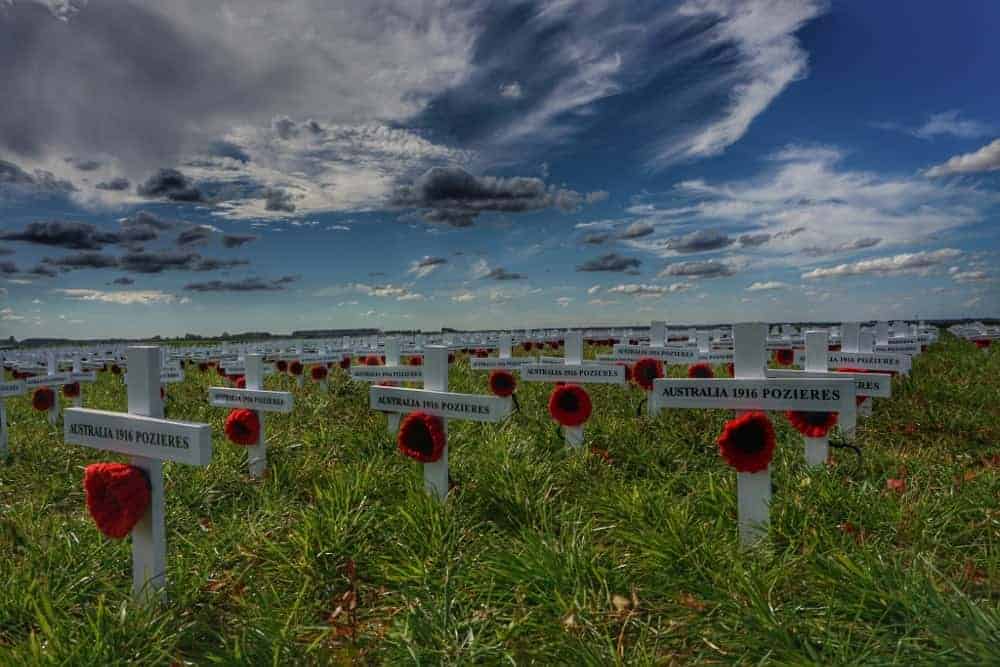

On the 25th April 1915, Australian and New Zealand forces stepped ashore onto the beaches of the Gallipoli Peninsular. They were part of a large expeditionary force comprising of British, Indian, Newfoundland and French forces, with the aim of fighting their way into Turkey and capturing Constantinople. An ambitious plan, and what might well have changed the course of the war, very quickly deteriorated into stalemate of trench warfare only a short distance inland from the landing sites.
The result was eight months of horrific trench warfare, which claimed the lives of thousands of men. On the 20th December 2015, the decision was made to leave the peninsular and The Australians and New Zealanders under secrecy and the cover of darkness were evacuated from Gallipoli. In those eight months 8709 Australians were killed along with 2,271 New Zealanders. This contingent was known as the Australian and New Zealand Army Corps, but more commonly ANZAC’s.
The 25th April soon became a day of remembrance, with the first ANZAC day in 1916. There were commemoration ceremonies throughout the two countries and 2000 Australian and New Zealand soldiers marched through the streets of London.
After Gallipoli, the ANZAC’s moved to the Western Front, and at the end of hostilities in November 1918, over 60,000 Australian and over 18,000 New Zealanders had been killed.
As a young soldier in the Australian Army in the 1980’s, I participated in many ANZAC day commemorations and I have strong memories of marching along George Street in Sydney alongside veterans of three wars. The day started with the dawn service at the local war memorial, and then it was back to the RSL for a rum with the veterans, before heading into the city for the main march. ANZAC day always ended back at an RSL for a game of two-up, with the calls of “come in spinner” ringing around the room.
I used to associate ANZAC day with the remembrance of the dead and missing however as time went on it became more than that. ANZAC day is not only commemorating the ultimate sacrifice so many of those men made, it is also remembering the ones that returned. War changed men, whether physically or mentally and it would have a profound impact on them for the rest of their lives.
From the uttermost end of the earth these were just ordinary men doing extraordinary things. If you want to understand our nation’s and your family’s history, there is no better way than to actually visit the battlefield sites and the places where history was made.
Join Leger Holidays as we commemorate the centenary of the battle in 2018 on this special 5-day Battlefield Tour from only £399 per person visiting; Fromelles, Polygon Wood, Poziers, Tyne Cot and Villers-Bretonneaux.
We will attend the Dawn Service on the 25th April 2018 at Villers-Bretonneux as well as the official commemorative event (TBA). We will also visit Ypres for the moving Last Post Ceremony at the Menin Gate and follow the last Australian battle to Montbrehain. You will be accompanied by an expert guide who will bring history to life with their wealth of knowledge of each individual battle.
Centenary of ANZAC at Villers-Bretonneau
5-Day tour from £429pp
Departing 23rd April 2018
Day 1 – Regional departure by coach
Day 2 – Fromelles and Flander
Day 3 – ANZAC Day at Villers-Bretonneux
Day 4 – The Somme and Montbrehain
Day 5 – Return Home
Tour includes: 4 nights’ hotel with continental breakfast, Specialist Battlefield Guide, Battlefield visits as described and regional coach joining point from the U.K.
With over 30 years’ experience, Leger is the UK leader in escorted Battlefield tours, with the widest range of tours covering WWI, WWII, Anniversary Tours and other campaigns, departure dates throughout the year and a choice of over 500 U.K. coach joining points, plus top-rated specialist guides.
For more information or to book you place – call 01709 786 572 or visit www.battlefield-escortedtours.co.uk.